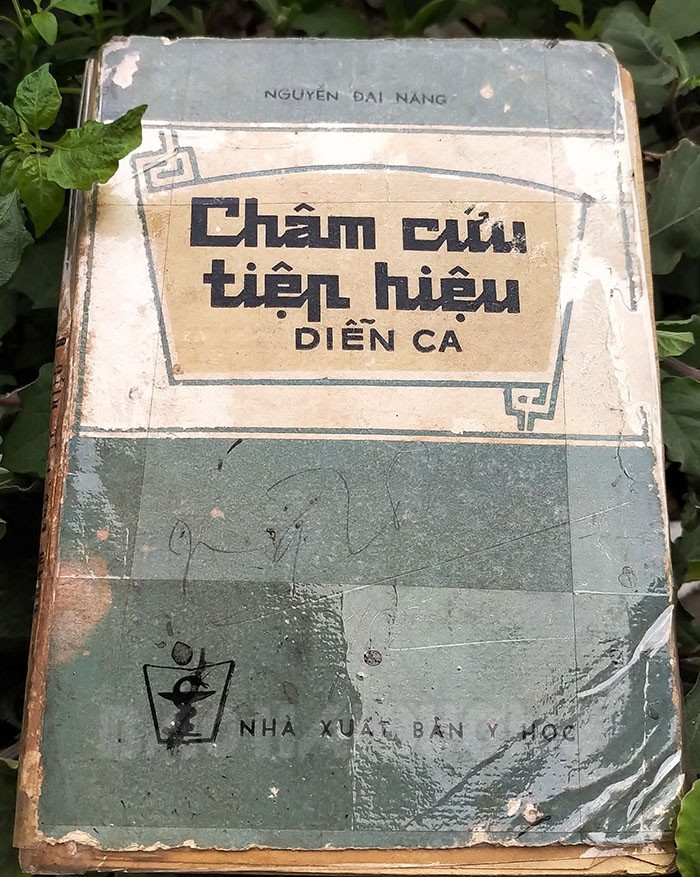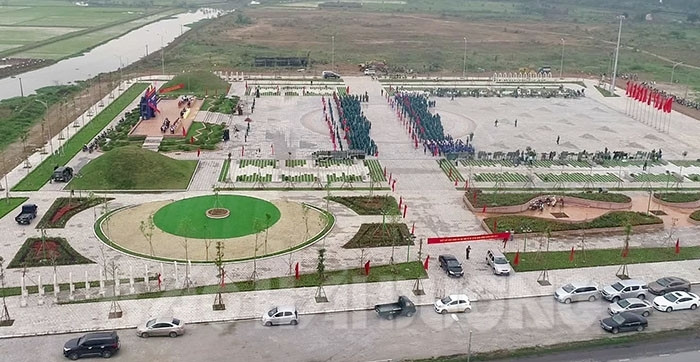For centuries, the legacy of non-drug treatments that the famous physician Nguyen Dai Nang left behind has been preserved and promoted by generations of physicians across the country in treating and saving people, contributing to raising the status of the country's medicine.

The book "Acupuncture and Moxibustion" is a valuable heritage of drug-free treatment methods.
The precious book "Acupuncture and Moxibustion"
In the history of medicine and pharmacy of the nation, Hai Duong in the past was proud to be the birthplace and nurture of many physicians who made great contributions to the country's medicine and pharmacy, such as the famous physician Tue Tinh - who was honored as the Saint of traditional medicine or Hai Thuong Lan Ong - a famous physician with profound knowledge in many fields who grew up in Thuong Hong land... Among the famous physicians of the ancient Dong land, the famous physician Nguyen Dai Nang emerged as a special case when he used acupuncture to treat and save people. His method of treating diseases without using drugs has been inherited and promoted by generations of physicians throughout the country to this day.
Time has passed more than 6 centuries, and the constant war and chaos have made the legacy of the famous physician Nguyen Dai Nang not much left for the world. The greatest work that contributed to his reputation is the work: "Cham cuu tiep hieu dien ca" - the "bedside book" of Vietnamese acupuncturists for many centuries. The content of the book is not dry medical terminology but poems written in Nom script recording the treatment of 130 types of diseases with 170 acupuncture points, of which 34 points have never been previously found in any medical work. "Acupuncture treatment methods were available abroad at that time, but many acupuncture points in this book were only found in Vietnam. These are valuable creations discovered by Nguyen Dai Nang or from contemporary experience that he applied and recorded. In particular, the book was written in Nom script, demonstrating the noble national pride of this famous physician," commented historian Tang Ba Hoanh.
Holding the book "Acupuncture and the Exemplary Treatment" in his hand, physician Nguyen Anh Tuan, Deputy Director in charge of the Northeast region of the Center for Traditional Medicine Services (Vietnam Traditional Medicine Association) said that the book has summarized practical experiences in the process of treating and saving people, guiding how to take acupuncture points, designating acupuncture points for treatment, arranging acupuncture points according to each part and each meridian of the body. According to the assessment of researchers, the work "Acupuncture and the Exemplary Treatment" is a valuable legacy of non-drug treatment methods that the famous physician Nguyen Dai Nang left for posterity, contributing to the construction of the science of acupuncture in Vietnam. The form and language of the work bear the strong imprint of Vietnamese culture. The knowledge of acupuncture left by the famous physician has greatly influenced many generations of acupuncturists later, including the "golden hand" Nguyen Tai Thu, who brought Vietnamese acupuncture to the world, making the whole world admire.

The central square of Kinh Mon town is named after Nguyen Dai Nang.
Unanswered Questions
Until now, what posterity knows about the famous physician Nguyen Dai Nang is only a few pieces of information recorded in Dai Viet Su Ky Toan Thu: In the year of Quy Mui, the first year of Khai Dai (1403): "A magician in Giap Son named Nguyen Dai Nang had the technique of using fire to prick or needle to cure people. Han Thuong appointed him as Tu Thua, and appointed him as an official of the Quang Te (medical agency) starting from there. Dai Nang... had good health and could shoot a hard crossbow. Later, he became Quang Te Lenh and held the Binh Qua palace, overseeing the Sung Uy army". The short records in the official history only tell us that he was from Giap Son, Kinh Mon prefecture, now Hiep An ward (Kinh Mon). In addition, there is no information about his year of birth, year of death, family lineage or place of worship.
To clarify the background, hometown, family lineage and place of worship of the famous physician Nguyen Dai Nang, the Hai Duong Acupuncture Association in collaboration with the Provincial Museum conducted a large-scale study of 101 historical and cultural relics of Kinh Mon and surrounding areas with the support and collaboration of museums in the North, combined with fieldwork in key communes of Kinh Mon town and Thuy Nguyen and An Hai districts (Hai Phong). However, all of these efforts have yet to yield results. Time has erased the traces of a talented physician in the history of the nation.
Researchers believe that perhaps in the last years of the Tran Dynasty and the beginning of the Ho Dynasty, the country fell into chaos and Dai Viet was under the rule of the Ming Dynasty for 20 years, so the relics about him were destroyed. Or because he was a loyal subject, when the Ho Dynasty was destroyed, he went into hiding, changed his name so that no one would know the name "Nguyen Dai Nang" anymore? Or did he suffer the same fate as thousands of skilled workers and good doctors who were captured by the Ming Dynasty and taken to China, only to remain forever in a foreign land?
These questions need to be answered so that future generations can better understand the founder of Vietnamese acupuncture. His name has been given to many streets in Hai Duong City, Kinh Mon Town and several other provinces and cities in the country. The central square of Kinh Mon Town is also named after him. However, those who are passionate about traditional medicine also want to honor Nguyen Dai Nang as a great physician, establish an acupuncture institute named after him, build a temple or memorial site in his hometown Kinh Mon... to be worthy of his contributions.
WATER